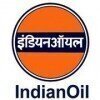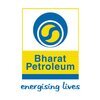Filter interviews by
Saudi Aramco QC Piping Inspector Interview Questions and Answers
Saudi Aramco QC Piping Inspector Interview Experiences
1 interview found
I applied via Referral and was interviewed before Dec 2021. There were 3 interview rounds.

1. What are the jointing procedures for HDPE pipe?
2. What are the minimum distance from the Equipment's to Fire hose reel?
3. What is the test pressure for fire water pipeline?
What is the reference aramco SAES standard for gaskets?
Interview Preparation Tips
Top trending discussions






Interview questions from similar companies

Assistant Manager Interview Questions & Answers
Indian Oil Corporationposted on 26 Dec 2021
I appeared for an interview before Dec 2020.
Interview Questionnaire
2 Questions
- Q1. Basic questions testing your technical skills
- Q2. Be confident with your answers
Interview Preparation Tips

I applied via Campus Placement and was interviewed in Apr 2021. There were 4 interview rounds.
Interview Questionnaire
1 Question
- Q1. Personal questions like tell me about yourself, why do you want this job etc
Interview Preparation Tips

I applied via Newspaper Ad and was interviewed before Mar 2021. There were 2 interview rounds.

Hi
Interview Preparation Tips

I applied via Walk-in and was interviewed in Jun 2021. There was 1 interview round.
Interview Questionnaire
1 Question
- Q1. About telecom
Interview Preparation Tips

Interview Questionnaire
1 Question
- Q1. Technical questions related to inventory,scm and stock management
Interview Preparation Tips
Experience: Experience and key skills

I applied via Referral and was interviewed before Jul 2021. There were 3 interview rounds.

General information about electronic products which is used in daily life and technical questions related about the electronic equipments.
(1 Question)
- Q1. Information about yourself and Negotiation about LPA
Interview Preparation Tips

I applied via Campus Placement and was interviewed before Feb 2023. There were 2 interview rounds.
Normal GD.Just brush up contemporary topics
(2 Questions)
- Q1. Tell me about yourself
- Q2. Mechanical Engineering Technical questions related to refrigeration
Interview Preparation Tips
- Mechanical Engineering
- General knowledge

I applied via Referral and was interviewed in Jan 2021. There were 3 interview rounds.
Interview Questionnaire
4 Questions
- Q1. What you see yourself after 5 years ?
- Q2. Why you leaving your current organization ?
- Q3. Who is your role model ?
- Q4. What you think about your country ?
Interview Preparation Tips
Don't copy other be yourself and believe in yourself.

I applied via Company Website and was interviewed in Sep 2021. There were 4 interview rounds.
Interview Questionnaire
1 Question
- Q1. Previews experience and broadband details
Interview Preparation Tips
Saudi Aramco Interview FAQs
Tell us how to improve this page.
Saudi Aramco Interviews By Designations
- Saudi Aramco Safety Officer Interview Questions
- Saudi Aramco Project Manager Interview Questions
- Saudi Aramco Engineer Interview Questions
- Saudi Aramco Senior Electrical Engineer Interview Questions
- Saudi Aramco Quality Engineer Interview Questions
- Saudi Aramco Welder Interview Questions
- Saudi Aramco Sales Trainer Interview Questions
- Saudi Aramco Warehouse Incharge Interview Questions
- Show more
Interview Questions for Popular Designations
- Piping Engineer Interview Questions
- Piping Designer Interview Questions
- Piping Supervisor Interview Questions
- Senior Piping Engineer Interview Questions
- Piping Design Engineer Interview Questions
- Piping Foreman Interview Questions
- Electrical Engineer Interview Questions
- Mechanical Piping Engineer Interview Questions
- Show more
Interview Questions from Similar Companies
Saudi Aramco QC Piping Inspector Reviews and Ratings
based on 1 review
Rating in categories
|
Project Engineer
23
salaries
| ₹24.5 L/yr - ₹52.2 L/yr |
|
Mechanical Engineer
14
salaries
| ₹4.9 L/yr - ₹19.2 L/yr |
|
Maintenance Planner
13
salaries
| ₹15.1 L/yr - ₹43.7 L/yr |
|
Safety Engineer
11
salaries
| ₹2.5 L/yr - ₹13.2 L/yr |
|
Safety Officer
11
salaries
| ₹4 L/yr - ₹12 L/yr |

Reliance Industries

Indian Oil Corporation

Shell

Bharat Petroleum
- Home >
- Interviews >
- Saudi Aramco Interview Questions >
- Saudi Aramco QC Piping Inspector Interview Questions













